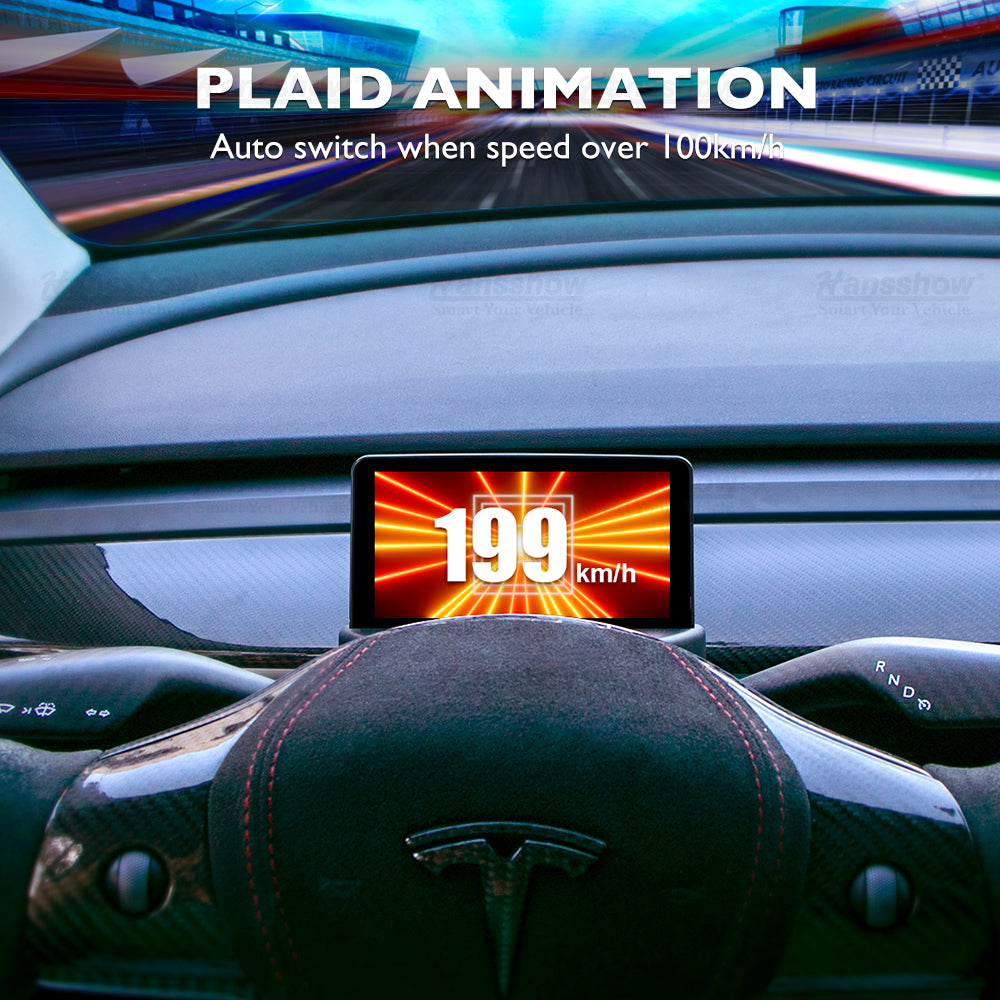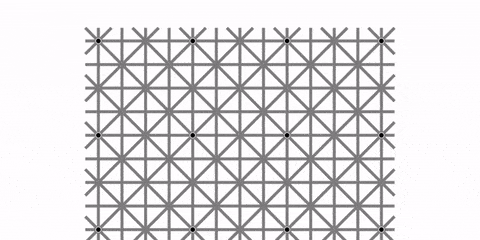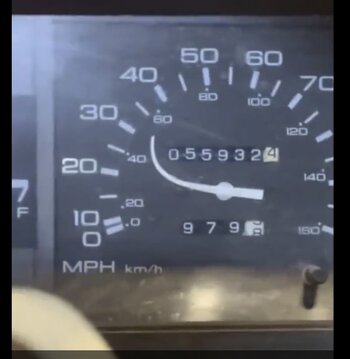In the UK, according to the Motor Vehicles (Approvals) Regulations 1996, the speedo may not under-read at all, but may overead (for a certain range of speeds) by no more than 10%+6.25 mph. So if your true speed is 40mph, your speedo could legally be reading up to 50.25mph but never less than 40mph.
The Grenadier Forum
Register a free account today to become a member! Once signed in, you'll be able to contribute to the community by adding your own topics, posts, and connect with other members through your own private inbox! INEOS Agents, Dealers or Commercial vendors please use the contact us link at the bottom of the page.
-
Guest submit your best shot for a chance to win the December Photo Contest. Photo Contest Click Here
You are using an out of date browser. It may not display this or other websites correctly.
You should upgrade or use an alternative browser.
You should upgrade or use an alternative browser.
If you've driven a Model 3 or Y, you get used to the speed being on the side very easily. However, if you're determined to make it ugly, then there are aftermarket dashes that people are installing in Model 3's/Y's that solve this problem. They are an aesthetic nightmare. Very close friend has done this on his 3 and I feel like breaking it off every time I see it.

 www.hautopart.com
www.hautopart.com

Model 3/Y 5.16-inch Mini Dash Screen Display
Specialize in Tesla accessories for Tesla Model 3, Model X, Model S and Model Y. Shop now with fast free shipping anywhere all over the world.
 www.hautopart.com
www.hautopart.com
As I drive a Defender I have never had to worry about speed before! A whole new experience awaits.
I sat back in an IG the other day and looked to where the speedo is, and then stared to where it would roughly be if it was in the more conventional place (straight ahead).
To me it’s not worth the effort doing anything. We are talking turning your head a few degrees and you will be looking straight at it.
Anyone who tells me it’s dangerous or they don’t move their head that far during their current driving activities is making it up as they go along.
Having driven an original mini and the newer version where the speedo was in the same place as the IG, I managed to not crash the vehicles and lived to tell the tale of my ownership of both.
First world problems
To me it’s not worth the effort doing anything. We are talking turning your head a few degrees and you will be looking straight at it.
Anyone who tells me it’s dangerous or they don’t move their head that far during their current driving activities is making it up as they go along.
Having driven an original mini and the newer version where the speedo was in the same place as the IG, I managed to not crash the vehicles and lived to tell the tale of my ownership of both.
First world problems
The only rule which really says something concrete about the precision of a speedometer exists in EU Directive "75/443/EEC". It depends on the age of the car: the speedometer on cars registered before 1991 may deviate from the real value by up to seven percent. For cars registered after 1991, the speedometer needle or digital display may even show up to ten percent more - plus an additional four kilometers per hour. At a real speed of 100 km/h, the law therefore allows a maximum speedometer reading of 114 km/h.Same in Germany, not more than 4% of the true speed, but never less.
I compared my wife's mini cooper clubman to a GPS and at 110kmh on the GPS it was showing 118kmh on the speedoThe only rule which really says something concrete about the precision of a speedometer exists in EU Directive "75/443/EEC". It depends on the age of the car: the speedometer on cars registered before 1991 may deviate from the real value by up to seven percent. For cars registered after 1991, the speedometer needle or digital display may even show up to ten percent more - plus an additional four kilometers per hour. At a real speed of 100 km/h, the law therefore allows a maximum speedometer reading of 114 km/h.
A massive difference on long drives if you set the cruise control on an indicated 110kmh.
That’s a good explanation why there are so many people driving way to slow for meThe only rule which really says something concrete about the precision of a speedometer exists in EU Directive "75/443/EEC". It depends on the age of the car: the speedometer on cars registered before 1991 may deviate from the real value by up to seven percent. For cars registered after 1991, the speedometer needle or digital display may even show up to ten percent more - plus an additional four kilometers per hour. At a real speed of 100 km/h, the law therefore allows a maximum speedometer reading of 114 km/h.
You're right, I got misinformation on another forum. I've lived with it for decades, now I know better.The only rule which really says something concrete about the precision of a speedometer exists in EU Directive "75/443/EEC". It depends on the age of the car: the speedometer on cars registered before 1991 may deviate from the real value by up to seven percent. For cars registered after 1991, the speedometer needle or digital display may even show up to ten percent more - plus an additional four kilometers per hour. At a real speed of 100 km/h, the law therefore allows a maximum speedometer reading of 114 km/h.
You're like almost everybody a victim of the manufacturer narrative. In the Diesel motorcycle forum there was a long thread about the topic. Some of us wanted a third-party speedometer and when they mounted it, it showed some percent too much. The manufacturer simply answered that this was due to legal rules.You're right, I got misinformation on another forum. I've lived with it for decades, now I know better.
That makes it easy for them to produce "within legal specs", as they say. It is much more difficult to produce things if you increase the precision from say, seven to one or two percent.
But when I investigated about this claim, it turned out that there is actually no such rule.
They finally implemented some "customized" settings (which is remarkably customer friendly) and then the speedometers were to about 1% precise.
Another short story of a wrong narrative: In Germany wearing an approved helmet on a motorcycle is mandatory. But I have found something that disproves this (false) account. A too complicated set of rules, which was created in decades but never cleaned out. But probably, legal or not, you will not get away with it in front of a judge - as he will simply just not get the point. A very German comedy.
For our English speaking colleagues: This text is hard to understand for Germans. But feel free to translate it, if you think this will help.
-------------------------
Schutzhelme nur in amtlich genehmigter Bauart?
Teilweise wird behauptet, in Deutschland sei jede Kleinigkeit einer gesetzlichen Regelung unterworfen und es bestünde eine kaum noch überschaubare Regelungsdichte. Selbst Fachleute könnten einzelne, eingeschränkte Fachgebiete kaum noch vollständig überblicken, noch weniger sei der "normale" Bürger hierzu in der Lage. In dieser oder ähnlicher Richtung hat sich auch der ehemalige Bundespräsident und Rechtsprofessor Dr. Roman Herzog wiederholt geäußert. Hier ein weiterer Diskussionsbeitrag zum Thema "Regelungsdichte" bzw. "Gesetzesflut":
§ 21a StVO zur Helmpflicht
Nach § 21a Absatz 2 StVO müssen "die Führer von Krafträdern und ihre Beifahrer während der Fahrt amtlich genehmigte Schutzhelme tragen." So weit so gut. Eigentlich eine ganz klare Regelung. Man muß im Prinzip nur noch wissen, was denn ein "amtlich genehmigter" Schutzhelm im Sinne der Vorschrift ist. Die Antwort ist nicht ganz einfach, sie ergibt sich jedenfalls nicht aus der StVO. Der versierte Bürger/ Motorradfahrer (m/w) wird jedoch interessiert nachforschen und dann alsbald auf die Verwaltungsvorschrift zu § 21a StVO stoßen. Die Verwaltungsvorschrift zu § 21a Absatz 2 StVO lautet wörtlich:
"Amtlich genehmigt sind Schutzhelme, die entsprechend der ECE-Regelung Nr. 22 (BGBl. 1984 II S. 746, mit weiteren Änderungen) gebaut, geprüft, genehmigt und mit dem nach der ECE-Regelung Nr. 22 vorgeschriebenen Genehmigungskennzeichen gekennzeichnet sind."
Jetzt muß man sich also nur noch das Bundesgesetzblatt, Teil II aus dem Jahr 1984 besorgen und dort auf Seite 746 nachschauen, wie die erwähnte ECE-Regelung Nr. 22 und das entsprechende Genehmigungskennzeichen aussehen. Also wird eben mal im Bundesgesetzblatt des Jahres 1984 an passender Stelle nachgesehen. Dort findet sich die gesuchte Rechtsvorschrift mit der eingängigen Bezeichnung
"Verordnung über die Inkraftsetzung der Regelung Nr. 22 für die Genehmigung von Schutzhelmen für Kraftradfahrer nach dem Übereinkommen vom 20. März 1958 über die Annahme einheitlicher Bedingungen für die Genehmigung der Ausrüstungsgegenstände und Teile von Kraftfahrzeugen und über die gegenseiteige Anerkennung der Genehmigung (Verordnung zur Regelung Nr. 22)".
In der gesuchten Verordnung vom 7. August 1984 stößt man dann sogleich auf den Wortlaut des § 1:
"Die nach Artikel 1 des Übereinkommens vom 20. März 1958 angenommene Regelung Nr. 22 über einheitliche Vorschriften für die Genehmigung der Schutzhelme für Fahrer und Mitfahrer von Krafträdern, Fahrrädern mit Hilfsmotor und Mopeds wird in Kraft gesetzt. Der Wortlaut sowie die Anhänge der Regelung werden nachstehend veröffentlicht."
Die eigentlich interessierende Regelung Nr. 22 ist leider im Bundesgesetzblatt nicht "nachstehend veröffentlicht", wie es in § 1 der Verordnung heißt. Der Interessierte erfährt aber aus der im Bundesgesetzblatt enthaltenen Fußnote zu § 1 der Verordnung immerhin, dass die Regelung 22 mit Anhängen als Anlageband zu "dieser Ausgabe des Bundesgesetzblattes ausgegeben" wird. Na gut, man besorgt sich also dann noch den Anlageband zum Bundesgesetzblatt 1984. Falls man Abonnent des Bundesgesetzblattes Teil II ist, wird einem der Anlageband auf Anforderung kostenlos übersandt. Dies ergibt sich ebenfalls aus der soeben erwähnten Fußnote zu § 1 der Verordnung. Nicht wenig staunen wird derjenige, der - auf welchem Weg auch immer - die Regelung Nr. 22 tatsächlich irgendwann zu sehen bekommt. Dort wird im einzelnen bestimmt, wie Schutzhelme nach der Regelung Nr. 22 zu bauen, zu prüfen und zu genehmigen sind. Es gibt Regelungen zu der Anzahl der vorzunehmenden Schlagprüfungen, zu den Punkten, an denen die Schlagprüfungen am Helm vorzunehmen sind, zur Reihenfolge der getesteten Stellen, zu Schnittebenen, zu Aufschlagpunkten, zu Bezugsebenen, zum Toleranzradius usw., und so fort.
Nachdem man sich also irgendwie mit dem Inhalt der ECE-Regelung Nr. 22 vertraut gemacht hat, weiß man, was ein "amtlich genehmigter Schutzhelm" im Sinne des § 21a Absatz 2 StVO ist. Vielleicht ist man ja bei der Recherche auch auf die "Zweite Verordnung über Ausnahmen von den Vorschriften der Straßenverkehrs-Ordnung (2. Ausnahmeverordnung zur StVO)" vom 19. März 1990 gestoßen (BGBl. I 1990, S. 550). Deren § 1 lautet klar und deutlich:
"Abweichend von § 21a Absatz 2 und § 54 Absatz 6 der Straßenverkehrs-Ordnung vom 16. November 1970 (BGBl. I S. 1565, 1971 S. 38), die zuletzt durch die Verordnung vom 9. November 1989 (BGBl. I S. 1976) geändert worden ist, dürfen Kraftrad-Schutzhelme, die nicht in amtlich genehmigter Bauart ausgeführt sind, bis zum 31. Dezember 1992 verwendet werden."
Wir wissen jetzt also, dass bis zum 31. Dezember 1992 auch Schutzhelme verwendet werden durften, die nicht in amtlich genehmigter Bauart ausgeführt waren. Und weil wir so genau recherchiert haben, stoßen wir jetzt zur Belohnung auch noch auf die "Erste Verordnung zur Änderung der 2. Ausnahmeverordnung zur StVO" vom 22. Dezember 1992 (BGBl. I S. 2481). Deren Artikel 1 bestimmt, dass in § 1 der 2. Ausnahmeverordnung zur StVO vom 19. März 1990 die Worte "bis zum 31. Dezember 1992" gestrichen werden.
Dies bedeutet im Klartext, dass auch nach dem 31. Dezember 1992, bis zum heutigen Tag, Schutzhelme verwendet werden dürfen, die abweichend von § 21a Absatz 2 StVO nicht in amtlich genehmigter Bauart ausgeführt sind. Anders ausgedrückt: Obwohl nach § 21a Absatz 2 StVO amtlich genehmigte Schutzhelme getragen werden müssen, können ebensogut Schutzhelme getragen werden, die nicht amtlich genehmigt sind.
Übrigens: Die Helmpflicht des § 21a Absatz 2 StVO gilt auch für Mofafahrer, nicht jedoch für Fahrer von "Leichtmofas". Was ein "Leichtmofa" ist, ergibt sich zwanglos aus der Anlage zu § 1 der "Verordnung über Ausnahmen von straßenverkehrsrechtlichen Vorschriften (Leichtmofa-Ausnahmeverordnung)" vom 26. März 1993 (BGBl. I S. 394).
§ 21a StVO zur Helmpflicht
Nach § 21a Absatz 2 StVO müssen "die Führer von Krafträdern und ihre Beifahrer während der Fahrt amtlich genehmigte Schutzhelme tragen." So weit so gut. Eigentlich eine ganz klare Regelung. Man muß im Prinzip nur noch wissen, was denn ein "amtlich genehmigter" Schutzhelm im Sinne der Vorschrift ist. Die Antwort ist nicht ganz einfach, sie ergibt sich jedenfalls nicht aus der StVO. Der versierte Bürger/ Motorradfahrer (m/w) wird jedoch interessiert nachforschen und dann alsbald auf die Verwaltungsvorschrift zu § 21a StVO stoßen. Die Verwaltungsvorschrift zu § 21a Absatz 2 StVO lautet wörtlich:
"Amtlich genehmigt sind Schutzhelme, die entsprechend der ECE-Regelung Nr. 22 (BGBl. 1984 II S. 746, mit weiteren Änderungen) gebaut, geprüft, genehmigt und mit dem nach der ECE-Regelung Nr. 22 vorgeschriebenen Genehmigungskennzeichen gekennzeichnet sind."
Jetzt muß man sich also nur noch das Bundesgesetzblatt, Teil II aus dem Jahr 1984 besorgen und dort auf Seite 746 nachschauen, wie die erwähnte ECE-Regelung Nr. 22 und das entsprechende Genehmigungskennzeichen aussehen. Also wird eben mal im Bundesgesetzblatt des Jahres 1984 an passender Stelle nachgesehen. Dort findet sich die gesuchte Rechtsvorschrift mit der eingängigen Bezeichnung
"Verordnung über die Inkraftsetzung der Regelung Nr. 22 für die Genehmigung von Schutzhelmen für Kraftradfahrer nach dem Übereinkommen vom 20. März 1958 über die Annahme einheitlicher Bedingungen für die Genehmigung der Ausrüstungsgegenstände und Teile von Kraftfahrzeugen und über die gegenseiteige Anerkennung der Genehmigung (Verordnung zur Regelung Nr. 22)".
In der gesuchten Verordnung vom 7. August 1984 stößt man dann sogleich auf den Wortlaut des § 1:
"Die nach Artikel 1 des Übereinkommens vom 20. März 1958 angenommene Regelung Nr. 22 über einheitliche Vorschriften für die Genehmigung der Schutzhelme für Fahrer und Mitfahrer von Krafträdern, Fahrrädern mit Hilfsmotor und Mopeds wird in Kraft gesetzt. Der Wortlaut sowie die Anhänge der Regelung werden nachstehend veröffentlicht."
Die eigentlich interessierende Regelung Nr. 22 ist leider im Bundesgesetzblatt nicht "nachstehend veröffentlicht", wie es in § 1 der Verordnung heißt. Der Interessierte erfährt aber aus der im Bundesgesetzblatt enthaltenen Fußnote zu § 1 der Verordnung immerhin, dass die Regelung 22 mit Anhängen als Anlageband zu "dieser Ausgabe des Bundesgesetzblattes ausgegeben" wird. Na gut, man besorgt sich also dann noch den Anlageband zum Bundesgesetzblatt 1984. Falls man Abonnent des Bundesgesetzblattes Teil II ist, wird einem der Anlageband auf Anforderung kostenlos übersandt. Dies ergibt sich ebenfalls aus der soeben erwähnten Fußnote zu § 1 der Verordnung. Nicht wenig staunen wird derjenige, der - auf welchem Weg auch immer - die Regelung Nr. 22 tatsächlich irgendwann zu sehen bekommt. Dort wird im einzelnen bestimmt, wie Schutzhelme nach der Regelung Nr. 22 zu bauen, zu prüfen und zu genehmigen sind. Es gibt Regelungen zu der Anzahl der vorzunehmenden Schlagprüfungen, zu den Punkten, an denen die Schlagprüfungen am Helm vorzunehmen sind, zur Reihenfolge der getesteten Stellen, zu Schnittebenen, zu Aufschlagpunkten, zu Bezugsebenen, zum Toleranzradius usw., und so fort.
Nachdem man sich also irgendwie mit dem Inhalt der ECE-Regelung Nr. 22 vertraut gemacht hat, weiß man, was ein "amtlich genehmigter Schutzhelm" im Sinne des § 21a Absatz 2 StVO ist. Vielleicht ist man ja bei der Recherche auch auf die "Zweite Verordnung über Ausnahmen von den Vorschriften der Straßenverkehrs-Ordnung (2. Ausnahmeverordnung zur StVO)" vom 19. März 1990 gestoßen (BGBl. I 1990, S. 550). Deren § 1 lautet klar und deutlich:
"Abweichend von § 21a Absatz 2 und § 54 Absatz 6 der Straßenverkehrs-Ordnung vom 16. November 1970 (BGBl. I S. 1565, 1971 S. 38), die zuletzt durch die Verordnung vom 9. November 1989 (BGBl. I S. 1976) geändert worden ist, dürfen Kraftrad-Schutzhelme, die nicht in amtlich genehmigter Bauart ausgeführt sind, bis zum 31. Dezember 1992 verwendet werden."
Wir wissen jetzt also, dass bis zum 31. Dezember 1992 auch Schutzhelme verwendet werden durften, die nicht in amtlich genehmigter Bauart ausgeführt waren. Und weil wir so genau recherchiert haben, stoßen wir jetzt zur Belohnung auch noch auf die "Erste Verordnung zur Änderung der 2. Ausnahmeverordnung zur StVO" vom 22. Dezember 1992 (BGBl. I S. 2481). Deren Artikel 1 bestimmt, dass in § 1 der 2. Ausnahmeverordnung zur StVO vom 19. März 1990 die Worte "bis zum 31. Dezember 1992" gestrichen werden.
Dies bedeutet im Klartext, dass auch nach dem 31. Dezember 1992, bis zum heutigen Tag, Schutzhelme verwendet werden dürfen, die abweichend von § 21a Absatz 2 StVO nicht in amtlich genehmigter Bauart ausgeführt sind. Anders ausgedrückt: Obwohl nach § 21a Absatz 2 StVO amtlich genehmigte Schutzhelme getragen werden müssen, können ebensogut Schutzhelme getragen werden, die nicht amtlich genehmigt sind.
Übrigens: Die Helmpflicht des § 21a Absatz 2 StVO gilt auch für Mofafahrer, nicht jedoch für Fahrer von "Leichtmofas". Was ein "Leichtmofa" ist, ergibt sich zwanglos aus der Anlage zu § 1 der "Verordnung über Ausnahmen von straßenverkehrsrechtlichen Vorschriften (Leichtmofa-Ausnahmeverordnung)" vom 26. März 1993 (BGBl. I S. 394).
Alle Klarheiten beseitigt!?
Text: RA Goetz Grunert, © verkehrsportal.de
---------------------
Last edited:
That was a really extreme braking ...
Love it. Erinnert mich an Reinhard Meys „Antrag auf Erteilung eines Antragsformulars“You're like almost everybody a victim of the manufacturer narrative. In the Diesel motorcycle forum there was a long thread about the topic. Some of us wanted a third-party speedometer and when they mounted it, it showed some percent too much. The manufacturer simply answered that this was due to legal rules.
That makes it easy for them to produce "within legal specs", as they say. It is much more difficult to produce things if you increase the precision from say, seven to, say, one or two percent.
But when I investigated about this claim, it turned out that there is actually no such rule.
They finally implemented some "customized" settings (which is remarkably customer friendly) and then the speedometers were to about 1% precise.
Another short story of a wrong narrative: In Germany wearing an approved helmet on a motorcycle is mandatory. But I have found something that disproves this (false) account. A too complicated set of rules, which was created in decades but never cleaned out. But probably, legal or not, you will not get away with it before any judge - as he will simply just not get the point. A very German comedy.
For our English speaking colleagues: This text is hard to understand for Germans. But feel free to translate it, if you think this will help.
-------------------------
Schutzhelme nur in amtlich genehmigter Bauart?
Teilweise wird behauptet, in Deutschland sei jede Kleinigkeit einer gesetzlichen Regelung unterworfen und es bestünde eine kaum noch überschaubare Regelungsdichte. Selbst Fachleute könnten einzelne, eingeschränkte Fachgebiete kaum noch vollständig überblicken, noch weniger sei der "normale" Bürger hierzu in der Lage. In dieser oder ähnlicher Richtung hat sich auch der ehemalige Bundespräsident und Rechtsprofessor Dr. Roman Herzog wiederholt geäußert. Hier ein weiterer Diskussionsbeitrag zum Thema "Regelungsdichte" bzw. "Gesetzesflut":
§ 21a StVO zur Helmpflicht
Nach § 21a Absatz 2 StVO müssen "die Führer von Krafträdern und ihre Beifahrer während der Fahrt amtlich genehmigte Schutzhelme tragen." So weit so gut. Eigentlich eine ganz klare Regelung. Man muß im Prinzip nur noch wissen, was denn ein "amtlich genehmigter" Schutzhelm im Sinne der Vorschrift ist. Die Antwort ist nicht ganz einfach, sie ergibt sich jedenfalls nicht aus der StVO. Der versierte Bürger/ Motorradfahrer (m/w) wird jedoch interessiert nachforschen und dann alsbald auf die Verwaltungsvorschrift zu § 21a StVO stoßen. Die Verwaltungsvorschrift zu § 21a Absatz 2 StVO lautet wörtlich:
"Amtlich genehmigt sind Schutzhelme, die entsprechend der ECE-Regelung Nr. 22 (BGBl. 1984 II S. 746, mit weiteren Änderungen) gebaut, geprüft, genehmigt und mit dem nach der ECE-Regelung Nr. 22 vorgeschriebenen Genehmigungskennzeichen gekennzeichnet sind."
Jetzt muß man sich also nur noch das Bundesgesetzblatt, Teil II aus dem Jahr 1984 besorgen und dort auf Seite 746 nachschauen, wie die erwähnte ECE-Regelung Nr. 22 und das entsprechende Genehmigungskennzeichen aussehen. Also wird eben mal im Bundesgesetzblatt des Jahres 1984 an passender Stelle nachgesehen. Dort findet sich die gesuchte Rechtsvorschrift mit der eingängigen Bezeichnung
"Verordnung über die Inkraftsetzung der Regelung Nr. 22 für die Genehmigung von Schutzhelmen für Kraftradfahrer nach dem Übereinkommen vom 20. März 1958 über die Annahme einheitlicher Bedingungen für die Genehmigung der Ausrüstungsgegenstände und Teile von Kraftfahrzeugen und über die gegenseiteige Anerkennung der Genehmigung (Verordnung zur Regelung Nr. 22)".
In der gesuchten Verordnung vom 7. August 1984 stößt man dann sogleich auf den Wortlaut des § 1:
"Die nach Artikel 1 des Übereinkommens vom 20. März 1958 angenommene Regelung Nr. 22 über einheitliche Vorschriften für die Genehmigung der Schutzhelme für Fahrer und Mitfahrer von Krafträdern, Fahrrädern mit Hilfsmotor und Mopeds wird in Kraft gesetzt. Der Wortlaut sowie die Anhänge der Regelung werden nachstehend veröffentlicht."
Die eigentlich interessierende Regelung Nr. 22 ist leider im Bundesgesetzblatt nicht "nachstehend veröffentlicht", wie es in § 1 der Verordnung heißt. Der Interessierte erfährt aber aus der im Bundesgesetzblatt enthaltenen Fußnote zu § 1 der Verordnung immerhin, dass die Regelung 22 mit Anhängen als Anlageband zu "dieser Ausgabe des Bundesgesetzblattes ausgegeben" wird. Na gut, man besorgt sich also dann noch den Anlageband zum Bundesgesetzblatt 1984. Falls man Abonnent des Bundesgesetzblattes Teil II ist, wird einem der Anlageband auf Anforderung kostenlos übersandt. Dies ergibt sich ebenfalls aus der soeben erwähnten Fußnote zu § 1 der Verordnung. Nicht wenig staunen wird derjenige, der - auf welchem Weg auch immer - die Regelung Nr. 22 tatsächlich irgendwann zu sehen bekommt. Dort wird im einzelnen bestimmt, wie Schutzhelme nach der Regelung Nr. 22 zu bauen, zu prüfen und zu genehmigen sind. Es gibt Regelungen zu der Anzahl der vorzunehmenden Schlagprüfungen, zu den Punkten, an denen die Schlagprüfungen am Helm vorzunehmen sind, zur Reihenfolge der getesteten Stellen, zu Schnittebenen, zu Aufschlagpunkten, zu Bezugsebenen, zum Toleranzradius usw., und so fort.
Nachdem man sich also irgendwie mit dem Inhalt der ECE-Regelung Nr. 22 vertraut gemacht hat, weiß man, was ein "amtlich genehmigter Schutzhelm" im Sinne des § 21a Absatz 2 StVO ist. Vielleicht ist man ja bei der Recherche auch auf die "Zweite Verordnung über Ausnahmen von den Vorschriften der Straßenverkehrs-Ordnung (2. Ausnahmeverordnung zur StVO)" vom 19. März 1990 gestoßen (BGBl. I 1990, S. 550). Deren § 1 lautet klar und deutlich:
"Abweichend von § 21a Absatz 2 und § 54 Absatz 6 der Straßenverkehrs-Ordnung vom 16. November 1970 (BGBl. I S. 1565, 1971 S. 38), die zuletzt durch die Verordnung vom 9. November 1989 (BGBl. I S. 1976) geändert worden ist, dürfen Kraftrad-Schutzhelme, die nicht in amtlich genehmigter Bauart ausgeführt sind, bis zum 31. Dezember 1992 verwendet werden."
Wir wissen jetzt also, dass bis zum 31. Dezember 1992 auch Schutzhelme verwendet werden durften, die nicht in amtlich genehmigter Bauart ausgeführt waren. Und weil wir so genau recherchiert haben, stoßen wir jetzt zur Belohnung auch noch auf die "Erste Verordnung zur Änderung der 2. Ausnahmeverordnung zur StVO" vom 22. Dezember 1992 (BGBl. I S. 2481). Deren Artikel 1 bestimmt, dass in § 1 der 2. Ausnahmeverordnung zur StVO vom 19. März 1990 die Worte "bis zum 31. Dezember 1992" gestrichen werden.
Dies bedeutet im Klartext, dass auch nach dem 31. Dezember 1992, bis zum heutigen Tag, Schutzhelme verwendet werden dürfen, die abweichend von § 21a Absatz 2 StVO nicht in amtlich genehmigter Bauart ausgeführt sind. Anders ausgedrückt: Obwohl nach § 21a Absatz 2 StVO amtlich genehmigte Schutzhelme getragen werden müssen, können ebensogut Schutzhelme getragen werden, die nicht amtlich genehmigt sind.
Übrigens: Die Helmpflicht des § 21a Absatz 2 StVO gilt auch für Mofafahrer, nicht jedoch für Fahrer von "Leichtmofas". Was ein "Leichtmofa" ist, ergibt sich zwanglos aus der Anlage zu § 1 der "Verordnung über Ausnahmen von straßenverkehrsrechtlichen Vorschriften (Leichtmofa-Ausnahmeverordnung)" vom 26. März 1993 (BGBl. I S. 394).
Alle Klarheiten beseitigt!?
Text: RA Goetz Grunert, © verkehrsportal.de---------------------

Why not use a dash cam - useful for many reasons plus you can show speed only on some or forward facing camera with speed. Good ones will also give an over speed warning etc.
For local Australian info:
(Taken from http://www.trafficlaw.com.au/speedos.html)
In the Australian "Federal Register of Regulations" there is reference to the Australian Design rules pointing to UN regs in this regard...seems the UN has its fingers in almost every pie on the menu!
The current ADR (Australian Design Rules) prohibits any under-reading:
"5.3. The speed indicated shall not be less than the true speed of the vehicle. At the test speeds specified in paragraph 5.2.5. above, there shall be the following relationship between the speed displayed (V1 ) and the true speed (V2). 0 ≤ (V1 - V2) ≤ 0.1 V2 + 4 km/h."
This formula means that the vehicle's actual (true) speed must not be greater than the displayed speed.
i.e. Displayed speed minus true speed must be greater than or equal to 0, and less than or equal to 4kmh plus 10% of true speed).
This means that if your vehicle's actual speed is 100kmh, the displayed speed is permitted to be anywhere between 100kmh and 114kmh.
Prior to July 2006 the ADR allowed the speedo read ±10% of true speed. This means that cars sold new prior to 1 July 2006 could comply with the ADR even if the speedo under-read by 10%. Despite this being theoretically possible, due to the testing procedures and the reasons stated below it was unlikely to occur in practice.
No wonder professional truck drivers get annoyed/frustrated with those who cruise in the overtaking lane at or below the posted speed limit according to their car speedo which might mean a difference of up to 10km/hr below allowable 'true speed' ...a lot of km and time lost over an 8 -10 hr shift!
(Taken from http://www.trafficlaw.com.au/speedos.html)
In the Australian "Federal Register of Regulations" there is reference to the Australian Design rules pointing to UN regs in this regard...seems the UN has its fingers in almost every pie on the menu!
The current ADR (Australian Design Rules) prohibits any under-reading:
"5.3. The speed indicated shall not be less than the true speed of the vehicle. At the test speeds specified in paragraph 5.2.5. above, there shall be the following relationship between the speed displayed (V1 ) and the true speed (V2). 0 ≤ (V1 - V2) ≤ 0.1 V2 + 4 km/h."
This formula means that the vehicle's actual (true) speed must not be greater than the displayed speed.
i.e. Displayed speed minus true speed must be greater than or equal to 0, and less than or equal to 4kmh plus 10% of true speed).
This means that if your vehicle's actual speed is 100kmh, the displayed speed is permitted to be anywhere between 100kmh and 114kmh.
Prior to July 2006 the ADR allowed the speedo read ±10% of true speed. This means that cars sold new prior to 1 July 2006 could comply with the ADR even if the speedo under-read by 10%. Despite this being theoretically possible, due to the testing procedures and the reasons stated below it was unlikely to occur in practice.
No wonder professional truck drivers get annoyed/frustrated with those who cruise in the overtaking lane at or below the posted speed limit according to their car speedo which might mean a difference of up to 10km/hr below allowable 'true speed' ...a lot of km and time lost over an 8 -10 hr shift!
Last edited:
That looks like a slick product that solves quite a few issues.Could work but I'm not sure how easy to view they would be - especially in low light.
Personally, when the time finally arrives, I am thinking of a HUD like the stuff from HUDWAY
It does. Part of me wonders if it’s vaporware though. The preorder phase has been like that for months with the availability date being gradually pushed back.That looks like a slick product that solves quite a few issues.
That would not be a good thingIt does. Part of me wonders if it’s vaporware though. The preorder phase has been like that for months with the availability date being gradually pushed back.
My Daughter's grandkid hauler has the option of a heads-up display projected on the windscreen. I found it to be a BIG distraction, especially at night, and worry that focusing on the read out causes your brain to deemphasize what is on the actual road ahead.I am using Waze almost every day, my phone sits in the middle of my console (you getr used to it!), and indeed the speed is way more accurate than the speedo of my car. When my car says that I am driving 132 km/h, it is in fact driving 127 km/h (from 129 km/h on I get fine, although the official limit is 120 km/h).
So, I am also wondering to buy a HUD, but I want it to show the speed of my cellphone. Anyway, I will need a navigation system, and I want to be able to call handsfree, so my (Android) phone will be connected to the Grenadier system.
I worry that reading a heads up displays can create the situation where I am looking at the traffic ahead, but not really seeing it.
The human visual system is not a faithful recording device. What we see does not depend entirely on what is out there but also to a considerable extent on what the brain computes to be most probably out there. If you are looking at the screen on your smart phone while driving, your brain is pretty much filling from memory and expectation what you THINK you are seeing of the traffic ahead behind that screen. There are some interesting videos with examples of how your brain actually edits what your are seeing so that it comports with what you expect to see.

These Illusions Prove That Your Brain Only Sees What It Wants To See
How many black dots do you see?
“At any given moment, you are only seeing 10% of what you think you are seeing. That means the other 90% of what appears in your visual field is being “generated” by your brain. Some of that infill is being drawn from memory, and some of it is being drawn from other sensory experiences.”
I worry that reading a heads up display can create the situation where I am looking at the traffic ahead, but not really seeing it.
Perception vs. vision is a complicated subject that is fun to dig into.
Similar threads
- Replies
- 47
- Views
- 2K
- Replies
- 244
- Views
- 12K
- Replies
- 17
- Views
- 768




